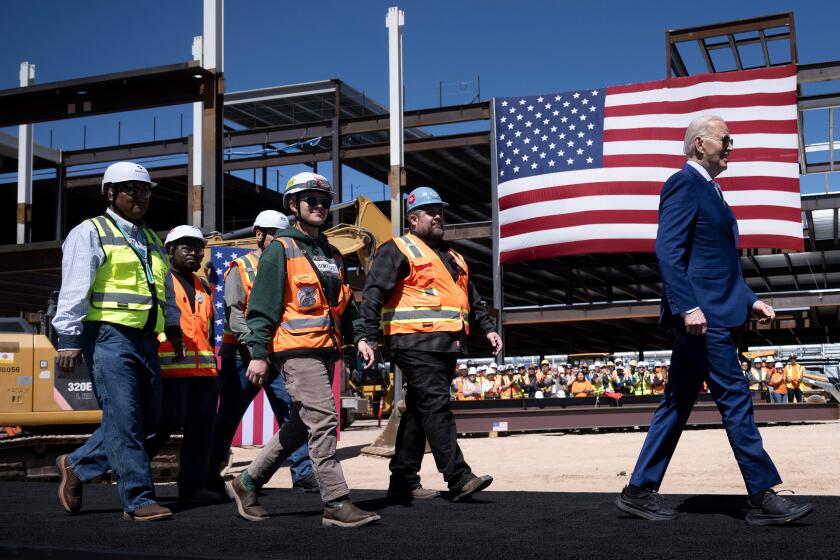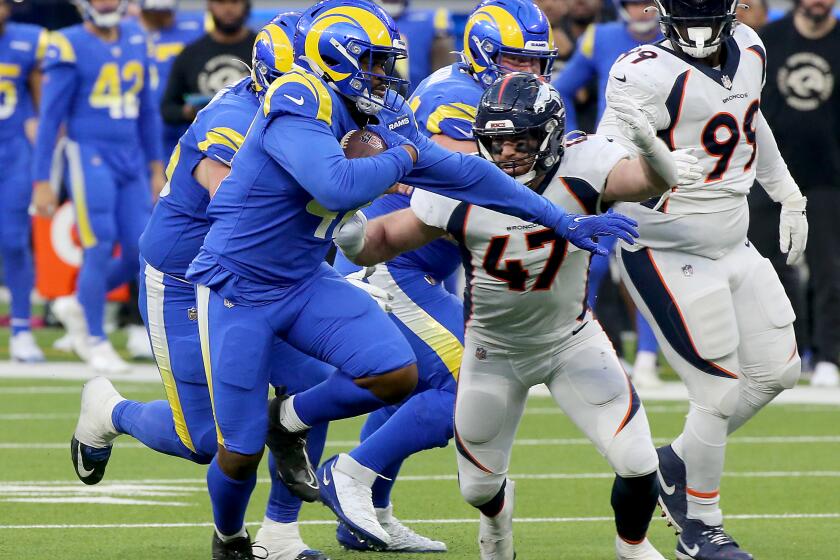Business Is Booming for Mall Builders : Redevelopment: Existing shopping centers are being recycled and new ones built as more and more merchants compete for relatively affluent South Bay shoppers.
How many new doughnut shops can a neighborhood support, anyhow? How many dry cleaners? Or fast food joints or convenience grocery stores or trendy eateries or clothing shops? Those are questions Donna Holick asks herself these days.
“Redevelopment is fine if they get a little more creative,” Holick said the other day as she stood inside her Harbor City store, the Kritter Korral Pet Shop.
“It just seems like we’re going to burn each other out.”
For six months now, Holick’s business has been disrupted as construction crews have gone about the job of renovating and expanding the corner shopping center in Harbor City where she has leased space for the past six years.
Work on the center, which started in October, 1988, is finally scheduled to be completed soon, and Holick hopes her life and business will return to normal.
When that happens, though, Holick still won’t be spared the sounds of construction work.
Across the street from her Western Avenue store, a large sign advertises the soon-to-be “Harbor City Convenience Center.” On an adjacent corner, another sign trumpets yet another planned shopping center.
And not too far north on Western, at the intersection with Pacific Coast Highway, there is yet another sign. This one announces the construction of a McDonald’s. “Here We Grow Again,” the red sign with a smiling Ronald McDonald proclaims.
So just how many new shops can the South Bay support? Apparently a lot, to hear local developers and commercial real estate brokers tell it.
Barring an economic downturn, the recycling of existing shopping centers, and the building of new ones on what little undeveloped commercial property remains, is likely to continue at a brisk pace, they say.
They cite as the reasons a relatively affluent population, as well as a scarcity of land and a number of older shopping centers that are either ready for the wrecking ball or a major face lift.
In some cases, developers have simply turned parking space into more lucrative shopping space; in other cases, such as The Terraces shopping center in Rancho Palos Verdes, they have completely reconfigured an existing site to make way for large-scale expansion.
“It’s like women’s dresses,” says South Bay developer Ron Florance. “Fashions change. The centers built 15, 20 or 25 years ago need to be freshened up, updated.”
Says Larry Lake, marketing director for Irvine-based Park Abrams Development Co., which is developing one of the sites across from Holick’s store and remodeling a center on Pacific Coast Highway, just west of Crenshaw Boulevard: “If you can come up with a piece of property, you can usually find a retailer.”
Lake says Park Abrams, which has built 44 shopping centers in Southern California over the past seven years, operates under a simple credo: Pay top dollar for top corners.
Within the past two weeks, bulldozers moved in on a former Sears service center on the corner of Crenshaw and Sepulveda boulevards in Torrance. The retailer relocated its service center operations to a larger building on Normandie Avenue. In place of the Sears building, a shopping center--and a McDonald’s--will be built.
Joseph Cassick, a real estate representative for McDonald’s, says the site was attractive to the company because of the high volume of traffic that passes through the intersection--80,000 vehicles a day, according to one local commercial real estate broker.
Moreover, Cassick said the site’s proximity to the sprawling Del Amo Fashion Square shopping center and other major retailers along Hawthorne Boulevard made the parcel desirable.
“In my opinion, it is the No. 2 intersection in the city of Torrance,” Cassick said.
Others share Cassick’s enthusiasm for Hawthorne Boulevard and its spillover effects on commercial properties within a reasonable distance. The brokerage company Grubb & Ellis, for instance, has compiled statistics showing that within a five-mile radius of the intersection of Sepulveda and Hawthorne boulevards there will be an estimated 546,631 people, or 192,117 households, by 1994.
More than 60% of the estimated 509,720 people who now live in that radius have annual incomes of $35,000 or more, according to the company’s figures.
The retail area along Hawthorne Boulevard “happens to be a great, great trade area,” says Steven Soboroff, a Santa Monica developer who teaches a UCLA extension class on shopping centers.
“You can buy land (on Hawthorne) for $40 or $50 a square foot, the rents you (can) demand are $2.50 to $3 a square foot. The bottom line is the deal works. You can buy the land, build a building, rent it out and the investment works.”
The city of Torrance’s own figures also illustrate just how robust its retail area is. Although figures that single out businesses on Hawthorne are not available, the city last fiscal year collected $24.7 million in sales tax revenues on taxable sales of $2.5 billion. The figures represent an increase of more than 12% from two years ago.
Despite those favorable economic conditions, the South Bay is not a guaranteed Shangri-La for developers. Even though several brokers say retail rents in the South Bay have been going up at about 15% a year, an increase comparable to Santa Monica, there is always the danger that a particular development won’t take off.
Cassick says that, because of the high cost of land, it is not uncommon for particular properties to go in and out of escrow several times before a developer finally comes along who feels he can make a go of it. In the case of the former Sears site at Sepulveda and Crenshaw, the original developer felt the profit margin was too slim and sold it to another developer, he said.
If some developers find the going rough at times, so do existing tenants in shopping centers that are being renovated. The Kritter Korral’s Holick says her business has declined about 20% to 25% since work began. Some longtime regular customers simply stopped shopping at her store because it was a hassle to maneuver through the construction activity.
“It just got to the point where it was really hard to get in and out,” Holick said. “It still is hard.”
Richard Guhr said the renovation of a center at Sepulveda Boulevard and Arlington Avenue, where he operated Geno’s Pizza for more than 16 years, was a factor in his decision to close the business, although it wasn’t the only one.
When the supermarket next door closed in 1987 and the center was sold, Guhr said, foot traffic dropped and his business fell.
Then, last year, renovation of the center began. Scaffolding hid his business from motorists. Parking was cut. The outdoor lights were shut off. Business declined further.
Two weeks ago, he decided to shut down, leaving this message on his telephone answering machine:
“I’m sorry, but we closed our business for good. We tried to go and keep it open as long as we could. But we saw ourselves forced to go ahead and close it. . . . We wish you all the best. Thank you and goodby.”
* MALL TRANSFORMED
Aging hilltop center is now a terraced complex. B4






